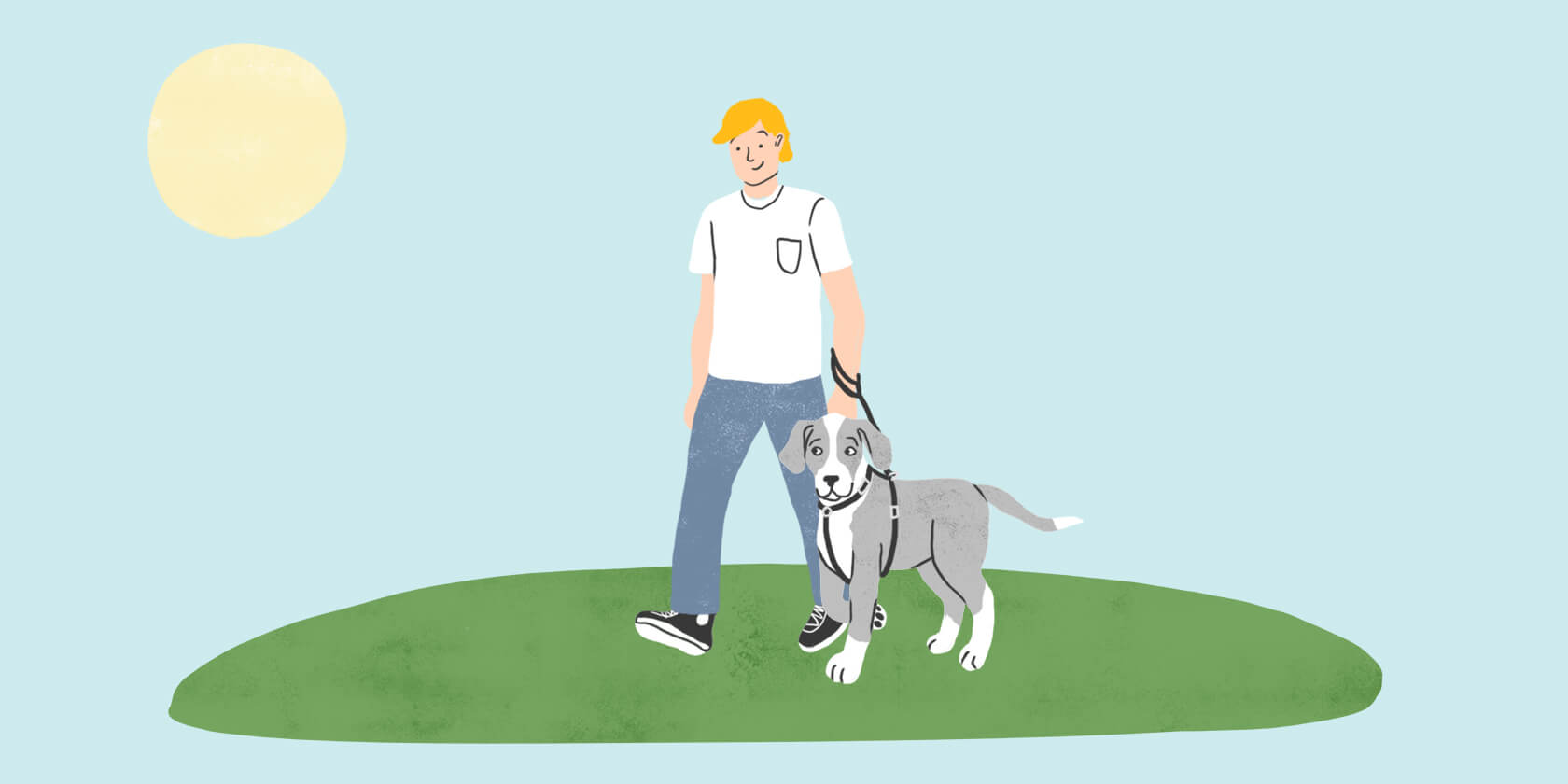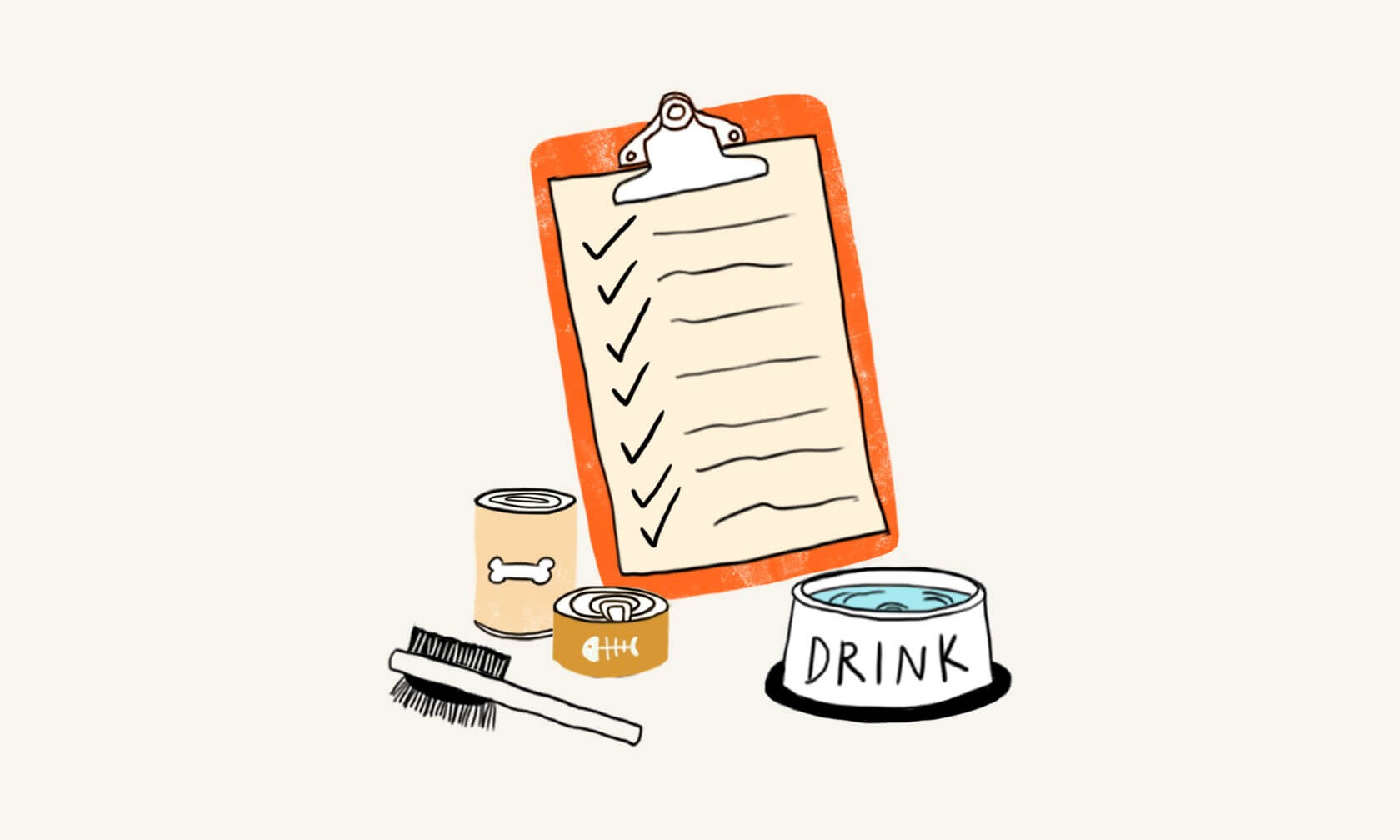Walking your dog on a harness is a great option for many reasons. Harnesses take leash pressure off a dog’s neck and distribute it more evenly over their body. Many dogs even find them more comfortable to wear than a collar.
A dog harness can also give you better control as a pet owner. Some harnesses are helpful during loose leash walking training. If you have a dog who likes to slip out of their collar, a well-fitting harness is a safer alternative.
Types of Dog Harnesses
There are lots of dog harness types to choose from. The best style for you depends on your training goals, you and your dog’s physical needs, and your leash walking plans.
Back-Clip Dog Harnesses
A back-clip harness has a ring to attach a leash on your dog’s back, typically just behind their shoulders. They’re ideal for dogs who walk nicely on leash or for when you’re using a long leash. Using a back-clip harness for dogs that pull is difficult, as many dogs find pulling against pressure rewarding, much like sled dogs pulling a load.
Front-Clip Dog Harnesses
A front-clip harness has the leash ring on the chest strap or chest panel of the harness. However, if your dog is tiny or has short legs, like a Corgi, a leash attached to the front clip can easily get tangled in their legs.
Over-The-Head Harnesses Vs. Step-In Dog Harnesses
Dog harnesses are either over-the-head or step-in style, meaning they are put on over your dog’s head or by sliding up over your dog’s front legs. Most step-in harnesses only have a back ring for leash attachment, while over-the-head harness styles may have a chest ring, back ring, or both.
Some dogs find putting anything on over their head unpleasant. If that’s your dog, a step-in dog harness is a good option. However, because lots of dogs do a little dance while you're trying to put on a step-in harness, they may be challenging to put on — going for a walk is super exciting, after all. You can solve both problems with a harness that has a buckle on the neck strap. You just clip the neck strap around like a collar and then secure the girth strap buckle around their body.
Straps, Vests, or Mesh Harnesses
Dog harnesses come in a variety of materials and overall body coverage. You can choose from nylon straps, mesh, or thicker padding for the chest piece or back piece of the harness. Think about your preferences in handling a bulkier harness and whether your dog minds the weight and feel of the material. Typically, the lighter and less restrictive, the better.

Harnesses for Dogs That Pull on Their Leash
A harness will not magically stop your dog from pulling. No collar or harness will teach your dog to walk nicely on leash — only training can do that! However, harnesses can be a helpful passive training tool and more comfortable for you while teaching your dog not to pull.
Use a Front-Attachment Harness
Your dog may not care if they choke themselves as they pull like a freight train. Wearing a harness helps prevent throat and neck injury. A front-attachment harness uses physics to help reduce the pulling force on you, saving your shoulders and arms from injury.
If a dog pulls forward when the leash is connected to the front chest ring, they are turned slightly to whichever side the leash is being held, reducing the force forward. This passive turning teaches that pulling doesn’t get them where they want to go. It also reduces the force pulling straight out from your arm and shoulder, lessening the impact when the dog rushes to the end of the leash.
Use Both the Chest and Back Clip with a Double-ended Leash
For strong pullers, using a double-ended leash attached to both the front of the harness and on the back clip gives the handler much better control over both their power and their direction. This is especially helpful for smaller handlers with large or strong dogs.
Should You Use a Tightening Harness
Some harnesses are marketed as “anti-pull.” These typically rely on a tightening action of martingale straps. If a dog pulls, the straps tighten uncomfortably. The idea is that the dog will stop pulling to relieve this discomfort. This is considered an aversive tool, relying on the dog wanting to stop the discomfort to make pulling decrease. This doesn’t work well for most dogs, especially if they’re used to pulling against a flat collar or other harnesses. Training a loose leash walk is the only way to stop your dog from pulling.
Tips for Choosing A Dog Harness
No matter which type of harness you choose, the following are important considerations:
Measure Your Dog to Ensure a Well-Fitting Harness
Your dog’s harness needs to be snug enough that they cannot easily slip out of it and not too tight to prevent skin irritation (especially in their armpits). Start with measuring your dog’s girth — the broadest part of your dog’s chest, just behind their front legs. You’ll also want to measure your dog’s lower neck to ensure that the neck strap is the correct length.
Just like with collars, a well-fitting dog harness should be snug but with enough room to place two fingers flat between their body and the straps. You should not see any bunching up of their skin when wearing the harness or indentations in their fur after taking the harness off. If you do, that means it’s too tight. Check your dog’s harness regularly and adjust if needed.
Your Dog's Harness Should Allow Unrestricted Neck and Shoulder Movement
Freedom of movement is important to maintain your dog’s musculoskeletal health. Harnesses that have horizontal across-the-chest straps or sit on top of your dog’s shoulders can cause changes in your dog’s gait, muscular imbalance, and shoulder issues over time.
To avoid this, look for a Y-shaped harness, where the chest strap or pad connects vertically from the neck strap to run between your dog’s front legs to connect to the girth strap. If you look at your dog from the front while wearing their harness, you should see a Y shape in the straps.
Double Clip for Escape Artists
If your dog has slipped out of harnesses or collars before, or you’re walking a dog you don’t know well, it’s important to have two points of connection. You can use a double-ended leash to clip to both a flat collar and the harness. Or simply connect the flat collar to the front ring of a harness with a large carabiner and strap. This way, if your dog slips their harness — or their collar — they are still connected to you by the leash.
ZPC-01970R1



